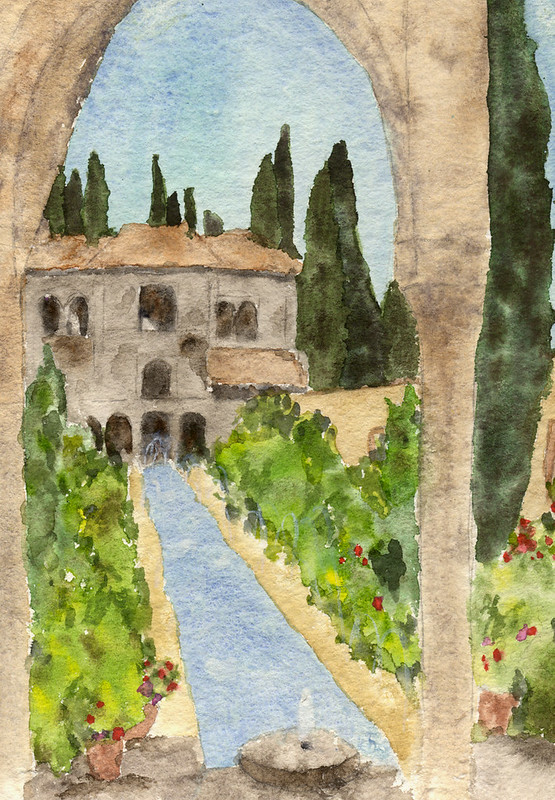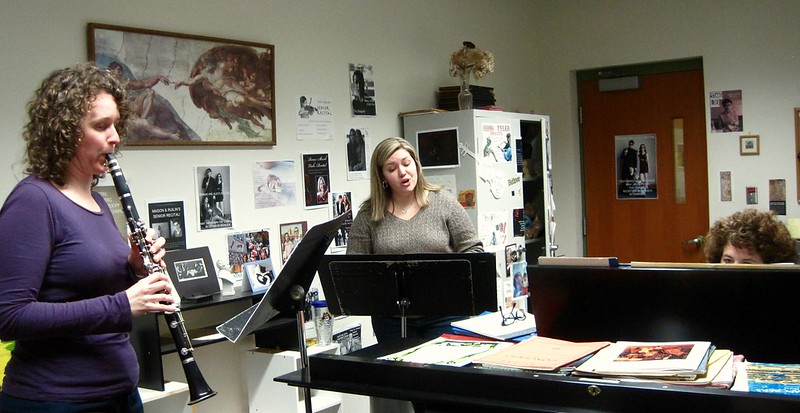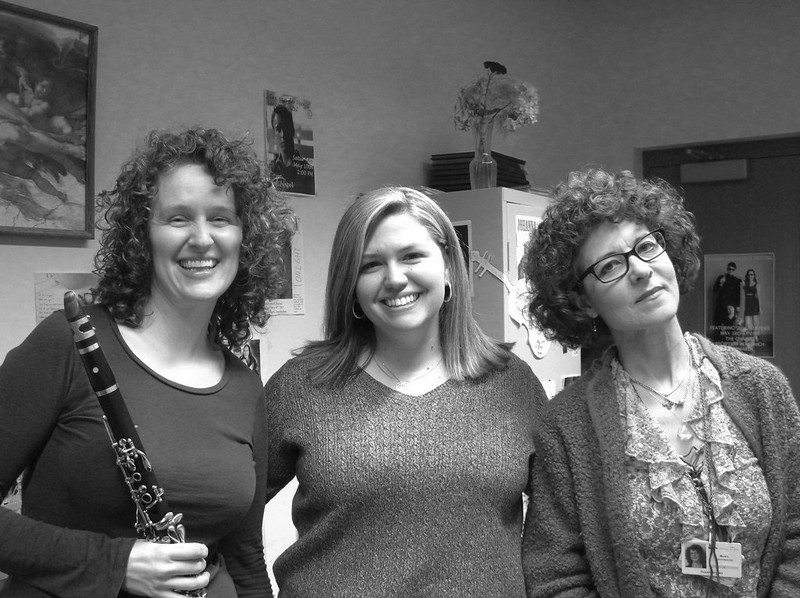New Voices: Deborah J. Anderson
Posted on March 24, 2016 by Jason

This post was written in preparation for our May 2016 spring program.
There’s an undeniable pleasure and pride that comes with reviving classic works written by the masters, but to select a piece of music which has little or no performance history and bring it to life presents a unique opportunity for the musician and the audience. Our May 1, 2016, concert entitled New Voices will be a program full of new music — all written within the past 20 years by living composers.
Compiling and researching the music for this concert has been a rich and rewarding experience for me and the members of Manitou Winds. Since the composers who created the music we’re performing are alive and well, we’re able to correspond with them, learn firsthand about their unique approaches to composition, and ask probing questions about their work. This more personal connection unlocks a new dimension of the musical experience.
I happened across the music of Deborah J. Anderson (b. 1950), last fall, by pure chance. I was searching for a modern piece for our clarinetist, Anne Bara, but was having difficulty finding something that fit the mood of the program. So, as creative director, I  decided to go in a different direction. I read a brief description of Deborah’s Five Songs for Kathleen for oboe, mezzo-soprano, and piano and decided to investigate further. To my delight, I was soon having a very cordial e-mail exchange with Deborah who gave me permission to transcribe the oboe part for clarinet.
decided to go in a different direction. I read a brief description of Deborah’s Five Songs for Kathleen for oboe, mezzo-soprano, and piano and decided to investigate further. To my delight, I was soon having a very cordial e-mail exchange with Deborah who gave me permission to transcribe the oboe part for clarinet.
Deborah says she began composing music around the age of six while growing up in Tacoma, Washington, but never pursued music or composition in academia. Though her schooling was primarily in French and language instruction, her catalog of compositions reveals a consummate musician with a unique flair for combining musical colors.
Five Songs for Kathleen (2007) is a brilliant song cycle combining the often bittersweet imagery of the poets’ lines with Deborah’s signature warm and graceful melodic writing.
Winter Sun
There was a bush with scarlet berries,
And there were hemlocks heaped with snow,
With a sound like surf on long sea-beaches
They took the wind and let it go.The hills were shining in their samite,
Fold after fold they flowed away;
“Let come what may,” your eyes were saying,
“At least we two have had to-day.”— Sara Teasdale (1884-1933)
 I asked Deborah about the backstory of the song cycle. It turns out it was a surprise gift for a long-time friend from college. “Kathleen is a retired opera singer whom I met many years ago when we were both freshmen at Lawrence University.” Deborah says, “At one point, Kathleen found it difficult to maintain her singing career while balancing family life. I composed Five Songs for Kathleen to encourage her.”
I asked Deborah about the backstory of the song cycle. It turns out it was a surprise gift for a long-time friend from college. “Kathleen is a retired opera singer whom I met many years ago when we were both freshmen at Lawrence University.” Deborah says, “At one point, Kathleen found it difficult to maintain her singing career while balancing family life. I composed Five Songs for Kathleen to encourage her.”
The cycle brings to life the poetry of Sara Teasdale, Emily Dickinson, and Sheila Nickerson with the added bonus of a small poem written by Deborah, herself, entitled “Swift Feet”.
Adding this song cycle to our program has given us a unique opportunity to work with the talented Claire Olinik, soprano soloist from the Traverse City area. Claire says that she’s always loved the poetry of Sara Teasdale and Emily Dickinson. When asked to pick her favorite song from the cycle, she says she would have to choose Dickinson’s “No Surprise”.
Apparently with no surprise
To any happy flower,
The frost beheads it at its play
In accidental power.The blond assassin passes on,
The sun proceeds unmoved
To measure off another day
For an approving God.— Emily Dickinson (1830-1886)
“The poetry is so heartbreaking, yet matter-of-fact.” said Claire, “It’s been fun to play with those tones and try to find a balance.”
Rehearsal for this song cycle has also been a rewarding musical opportunity as we’ve enlisted the talents of Susan Snyder, collaborative pianist at Interlochen Center for the Arts, to bring Deborah’s  piano score to life. Susan’s interpretation enlivens the poetry further and allows the colorful duet of soprano and clarinet to soar.
piano score to life. Susan’s interpretation enlivens the poetry further and allows the colorful duet of soprano and clarinet to soar.
Anne admits she initially worried the timbre of the clarinet would differ too greatly from what was originally scored for oboe, but she’s now in love with her part. While each song offers a chance for the clarinet to shine, certainly the most virtuosic moment is in Deborah’s setting of “Dolphin” by Sheila Nickerson. It features “dolphin calls” for both the soprano and the clarinet along with florid passages running up and down the instrument’s range — a colorful and vivid delight.
It would certainly be remiss to not convey what an inspiring experience it has been to work with a female composer who has set to music the texts of female poets. Likewise, it has also been a unique opportunity to place this special music in the hands of three very masterful women — together, perhaps, giving at least a modicum of long overdue vindication to the countless female composers who were overshadowed or suppressed throughout history.
We look forward to sharing Deborah J. Anderson’s lovely song cycle with our audience and hope to explore more of her compositions in future programs.
Note: The beautiful watercolor paintings you see in this article were created by the composer, Deborah J. Anderson.
Category: Musical Musings, New Voices, PerformancesTags: Anne Bara, Benzie County, Benzie Wild Rose Society, chamber group, Chamber Music, Claire Olinik, clarinet, Classical Music, composers, concert, Deborah J. Anderson, Emily Dickinson, female composers, Five Songs for Kathleen, Frankfort, Interlochen, Interlochen Center for the Arts, manitou winds, modern music, New Voices, Northern Michigan, performance, piano, Sara Teasdale, Sheila Nickerson, soprano, Susan Snyder, Traverse City, woodwind


